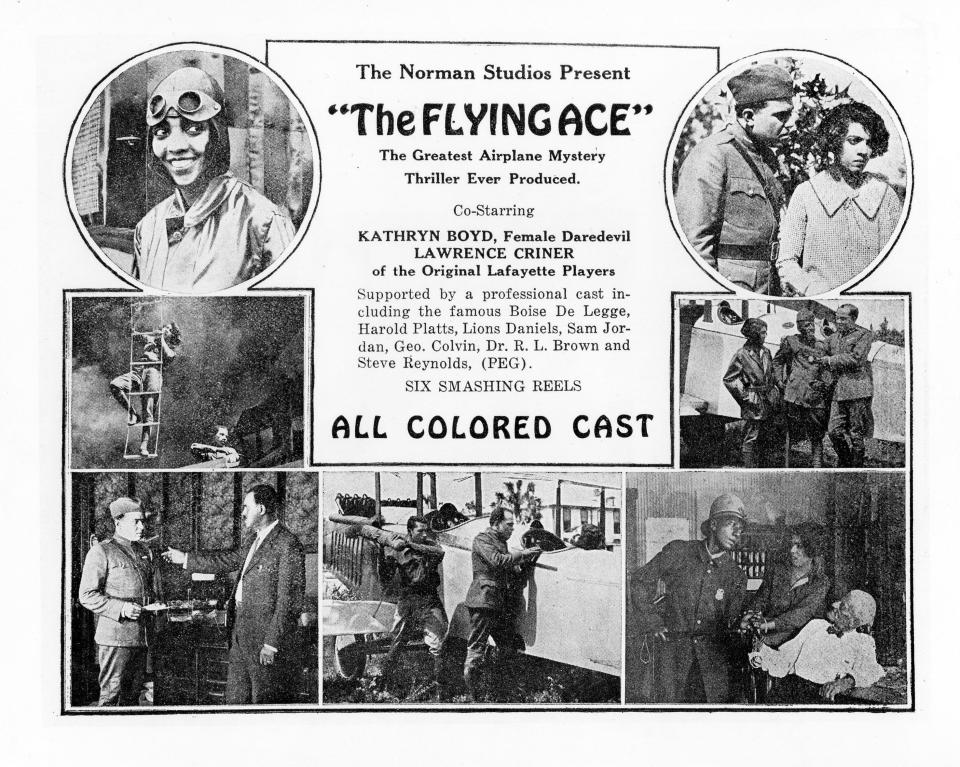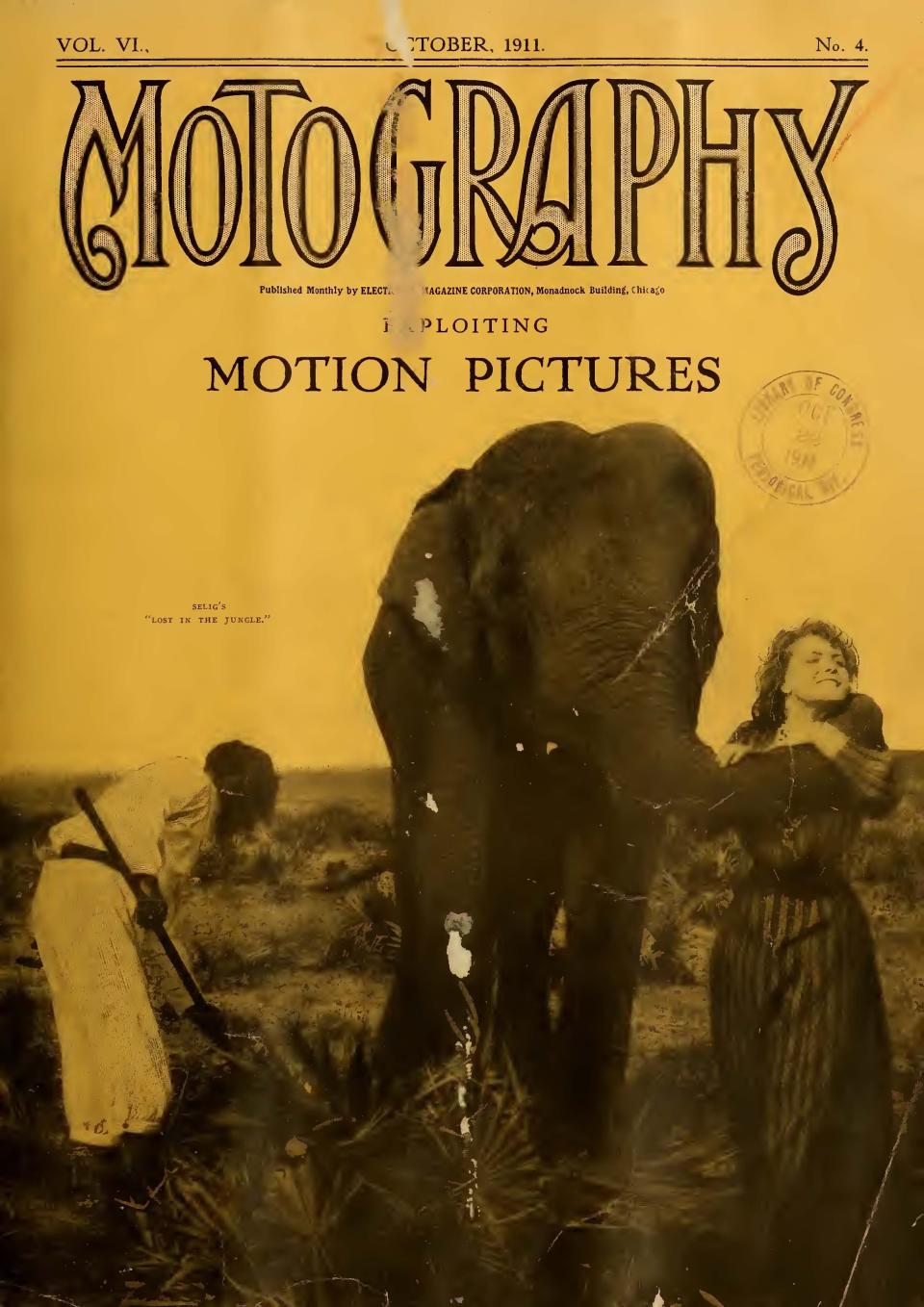Want to watch some of the old silent films shot in Jacksonville? Here are 20 of them.
Most of the short silent movies made in Jacksonville more than 100 years ago are lost or disintegrated, gone forever. But a few remain, and a library researcher at Florida State College at Jacksonville has collected some of them in one place online, available for anyone to watch.
Jennifer Grey, public services coordinator for FSCJ libraries, is sure more exist, and she's looking for them. For now, though, she's found 20 that were made in Jacksonville's heyday as a winter film destination. They include slapstick comedies, Civil War stories and jungle adventures set in Africa (complete with leopards and an elephant known as Toddles, or sometimes Toodles).
They can be found at guides.fscj.edu/jax/silentfilm.
The movies offer a firsthand glimpse of Northeast Florida in the early part of the 20th century — a vastly different place, of course, than it is now — and you can't help but look at the scenery to try to figure out where the scenes were shot.
Learning local past: FSCJ course on history of Jacksonville, a city at the crossroads, will be open to public this fall
Vintage Times-Union: When Jacksonville was 'World's Winter Film Capital'

Grey began collecting them while doing research for an FSCJ course on Jacksonville history that kicks off this fall. "It was a nice change from some of the heavier work I’ve been doing," she said.
Though not always easy to find, the movies have already been available for viewing. Many of them were already posted on YouTube and others were found in various film archives, including one from the Netherlands.

One with well-known Jacksonville connections is "The Flying Ace," which was filmed in the 1920s after other filmmakers had left the city. It was made by Arlington's Norman Studios, where white filmmaker Richard Norman created movies for Black audiences.
At a time when many films pictured Blacks as comical or menacing, he routinely cast his actors in sympathetic and heroic roles, just like the war hero (played by Lawrence Criner) in that film.
It took some digging to find some of the others, Grey said, since some of the people who'd put the films online didn't know or particularly care that they were filmed in Jacksonville.

Grey began searching for the movies by looking at research already done on Jacksonville's time as a silent film mecca, which lasted about a decade beginning in 1908. "The First Hollywood," by Shawn Bean, was useful, as were some academic writings and memoirs or biographies of some of the film people who came to the city — including those about Hardy, Tom Mix, Miriam Cooper and Gene Gauntier.
Jacksonville movie history: Norman Studios looking to reopen Arlington filmmaking museum, expand campus
The sound of silents: Silent films give Jacksonville musicians chance to add fun sound effects
Grey also went looking for evidence in the films themselves.
She joked, "One of my highly academic processes is, if I can see Spanish moss, it was probably shot in Jacksonville.”
The broad St. Johns River is another clue: “They liked to dump people in canoes, then dump them in the river.”
It's easy to find counter-evidence too. “If I see a mountain? Clearly not Jacksonville," she said.
'A moving-picture paradise'
Gauntier was a writer/actress in the Kalem Co., a New York film studio that pioneered filmmaking in Jacksonville when it sent a crew to the city in 1908 to take advantage of its warmer weather and sunshine.

In a 1928 memoir in the Woman's Home Companion, she recalled her first impression of what would be her winter home:
"We detrained in Jacksonville, which in 1908 was vastly different from the bustling metropolis it is today. The main street was more like that of a country village than the artery of a town containing some sixty thousand people."
It was an exotic place, she wrote, of jungles and beaches, its sunshine and breezes. "You will see that we had discovered a moving-picture paradise."
Other film crews followed the Kalem Co., producing hundreds of films in the city.
Among those that survive are comedies such as "Bath Tub Elopement," starring comedians Tweedledum and Tweedledee, featuring many pratfalls and broad laughs. There are some adventures set in Africa, filmed at the beach, including Grey's favorite, "Lost in the Jungle," in which star Kathlyn Williams is attacked by a leopard (she was reportedly slightly injured) and then rescued by the elephant Toddles, or Toodles, who picks her up by the trunk and carries her to safety.

Oliver Hardy, who grew up in Georgia, began his career in Jacksonville after hearing of the opportunities offered there. Look for him in "One Too Many," which is on the FSCJ list of movies.
Other surviving films featured Civil War stories told from the Confederate point of view. They had an influence on society beyond entertainment, one scholar argues.
Grey cited research by David Morton, who teaches history at the University of Central Florida. In 2020 he examined Jacksonville's film history in an article in the Florida Historical Quarterly called "A Year-Round Playground Twenty-Seven Hours from Broadway: Re-Assessing Jacksonville’s Legacy as an “Almost Hollywood.”
"Kalem’s emphasis on the Confederate 'lost cause narrative' reversed the Northern perspective of American Civil War films," he wrote, "and established a trend that inspired later groundbreaking films set in the Civil War era such as 'The Birth of a Nation' (1915) and 'Gone With the Wind' (1939)."
Vintage Times-Union: Some Hollywood glamour came to Jacksonville in the early 2000s
Some of those Civil War movies made by Kalem featured female spies, such as the one played by Anna Nilsson in "Darling of the CSA." Among her exploits, she steals secret papers from under the nose of Union soldiers, scrawls a cheeky note — “Thank you” — on an officer’s tent, then escapes by impersonating a Northern soldier.
Actress Miriam Cooper was a member of the Kalem troupe in Jacksonville who went on to be in D.W. Griffith's "Birth of a Nation" and "Intolerance." In her autobiography, "Dark Lady of the Silents," she wrote about her time in the city.
She was just 18 and homesick, but the filmmakers kept her busy: "Perhaps because it was the 50th anniversary of the Civil War, we did a lot of war pictures. I was in so many Civil War one-reelers for Kalem that they all run together in my mind. We'd do one a week."
This article originally appeared on Florida Times-Union: Movies made in Jacksonville: 20 silent films from early 20th century
